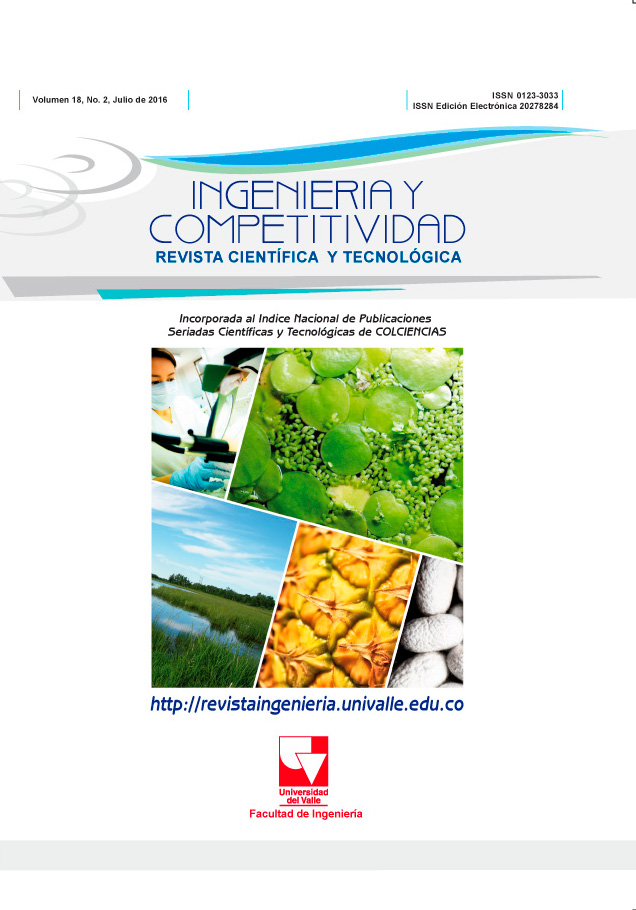Identificación de un consorcio microbiano en humedales construidos de flujo sub-superficial alimentados con aguas residuales industriales coloreadas
Palabras clave:
Degradación de color, mezcla de colorantes, tratamiento de aguas residuales industrialesContenido principal del artículo
En esta investigación se aislaron microorganismos de un consorcio microbiano, presentes en humedales
construidos a escala piloto de flujo sub-superficial horizontal, empleados en el tratamiento de aguas residuales
de una industria textil. Los humedales estaban plantados con Phragmites australis y se monitorearon
parámetros fisicoquímicos como DQO, DBO5, ST, SST, SDT, nitratos, fósforo total y metales (hierro,
manganeso, zinc, cobre, plomo). Los consorcios microbianos presentes en los humedales fueron aislados por
técnica de enriquecimiento selectivo a partir de una mezcla de cuatro colorantes y el consorcio que presentó
una mayor degradación de color en el laboratorio fue elegido para su identificación por métodos moleculares.
Del aislamiento microbiano, se realizó la evaluación de 24 consorcios, en los cuales se encontraron tasas
de decoloración de más del 50%, el consorcio que mejor resultados arrojó estaba conformado por hongos
y una bacteria (Rhodotorula mucilaginosa, Galactomyces pseudocandidum, Rhodotorula sp. y Escherichia
coli). En promedio se presentaron remociones mayores del 50% de DQO y del 80% de DBO5. De los cinco
metales estudiados solo se encontraron trazas de manganeso y plomo.
Downloads
Los autores que publican en esta revista están de acuerdo con los siguientes términos:
Los autores ceden los derechos patrimoniales a la revista y a la Universidad del Valle sobre los manuscritos aceptados, pero podrán hacer los reusos que consideren pertinentes por motivos profesionales, educativos, académicos o científicos, de acuerdo con los términos de la licencia que otorga la revista a todos sus artículos.
Los artículos serán publicados bajo la licencia Creative Commons 4.0 BY-NC-SA (de atribución, no comercial, sin obras derivadas).

